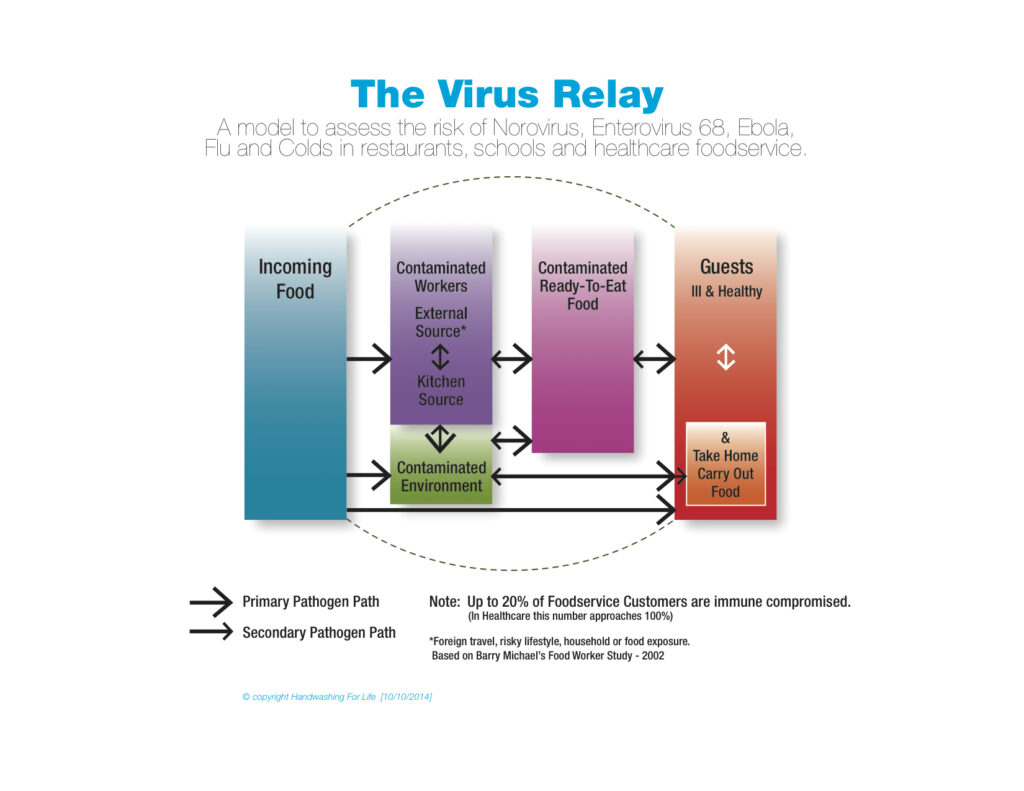Norovirus, H3N2 Flu, Colds, Enterovirus 68 and Ebola …
Norovirus rates are picking up in a variety of environments as the winter deepens, but this year, it shares the stage with H3N2 flu, Ebola and Enterovirus 68. These four, along with the common cold, are spread everywhere folks gather, calling for added away-from-home hand and high-touch surface cleanliness to protect the people they serve and to fight staff absenteeism.

All five of these bugs are viruses. All have proven to live long enough on surfaces to be a risk. According to the CDC, “Ebola on dried-on surfaces such as doorknobs and countertops can survive for several hours.” Norovirus can survive days and even weeks. These surfaces are the transfer points to the unsuspecting hands in this primary pathway for many of the infections common to the foodservice, education and hospitality space.
Clean-as-you-go protocols should be ramped up. All it takes is a well-formulated spray cleaner and a good single-use paper towel. Active out-front cleaning reassures both customers and staff. Verify your protocol and product choice with an ATP assessment.
Science says that all these viruses are vulnerable to removal from hands with soap and water. Between soap-water washes, alcohol hand sanitizers are quite effective when used properly. During this season, where the threats are the greatest and water is unavailable, the performance of your hand sanitizer can be super-charged by applying a double dose and using it as soap, scrubbing for 20 seconds, but then wiping it off with a paper towel while still wet. Then, take a final shot of the sanitizer to kill even more of any remaining virus. Take these two simple steps to multiply hand-sanitizer effectiveness when away from home.


